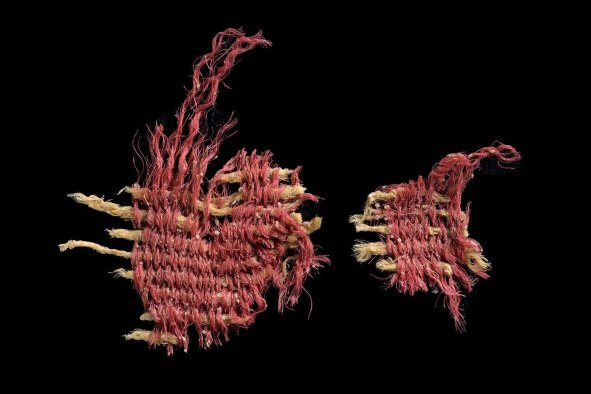When it comes to neurodegenerative diseases, our emphasis on body mass index (BMI) and overall body weight as markers of health may be outdated. Instead, research suggests we should be focusing more on the distribution of fat and muscle around our bodies, and the percentage difference between the two.
More than 7 million people in the United States live with some form of neurodegenerative disease, the National Institute of Environmental Health Sciences estimates, with Alzheimer's and Parkinson's Disease accounting for the majority of these cases.
Neurodegenerative diseases occur when nerve cells in our brains and peripheral nervous system begin to lose function over time and eventually die, affecting everything from our memory to our mobility.
Our likelihood of developing these disorders is determined by a combination of our genetics and our environment, including various lifestyle factors.
"In recent years, due to the widespread use and even abuse of weight loss drugs (e.g., semaglutide), people have become overly concerned with overall weight and often overlook the key role of different body components," Shishi Xu, a clinician in the Department of Endocrinology and Metabolism at West China Hospital at Sichuan University, told Newsweek.
In a new study, published in the journal Neurology, Xu and colleagues from Sichuan University gathered data from 412.691 participants to explore the relationships between body composition and dementia risk, rather than absolute weight.
"Our significant findings support our hypothesis that it is not merely the absolute weight of fat and muscle, but their distribution and quality that significantly impact the risk of developing neurodegenerative diseases," Xu said.
At the beginning of the study, the researchers measured the participants waist to hip ratio, grip strength, bone density, and fat and lean mass.
"We identified three body patterns that may significantly influence the future risk of neurodegenerative diseases," Xu said. "'Central obesity' (belly fat, characterized by fat mass mainly in the trunk); 'arm-dominant fat distribution' (characterized by fat mass predominantly in the arms); and 'muscle strength' (grip strength, representing muscle quality)."
Over an average nine-year follow-up period, participants with high levels of "central obesity" were found to be 13 percent more likely to develop neurodegenerative diseases than those with lower levels. Similarly, those with high levels of "arm-dominant fat distribution" were 18 percent more likely to develop these conditions, compared to those with lower levels of arm fat.
"Conversely, those with high 'muscle strength' were 26 percent less likely to develop neurodegenerative diseases than those with low levels of strength," Xu said.
So, why does the distribution of body fat matter when it comes to neurodegenerative disorders?
Xu suggested that those with less favorable body fat distributions were more likely to get fat being deposited in places where it shouldn't be, like muscle tissue. This so-called fat infiltration has been associated with an increased risk of chronic disease, as well as insulin resistance, muscle impairment and inflammation.
"In simpler terms, fat accumulation in the abdomen and arms appears to have a 'poisonous' and 'inflammatory' effect on other organs, including the cardiovascular system and neuro[logical] health, leading to a higher risk of neurodegenerative diseases," Xu said.
"This means that, if you are exposed to adverse body composition patterns (e.g., belly fat), you will have a higher risk of developing cardiovascular diseases, which significantly increases your risk of future neurodegenerative diseases.
"Actively preventing cardiovascular diseases at an early stage after exposure to adverse body composition patterns may decrease your future risk of neurodegenerative diseases by 10.7 to 35.3 percent."
Our propensity to gain fat around our tummies is partially determined by our DNA, so some people will have to work harder to keep off belly fat than others. However, there are things we can do to optimize our body composition.
"Body fat distribution is not solely determined by genetics," Xu said. "So, be more active, reduce sedentary behavior, and work on moving fat from your arms and belly. By doing so, you can potentially lower your risk of neurodegenerative diseases."
It is important to add here that, while the study drew from a large sample size of data, the findings are based on observational data, so we cannot determine with certainty whether body fat distribution actually causes neurodegenerative disorders. However, the findings add to a growing body of evidence that modulation of lifestyle factors may be able to reduce our risk of developing these diseases.
"Our findings highlight that targeted interventions to modulate body composition—reducing trunk and arm adipose [fat] while promoting healthy muscle development—may be more effective for neurodegeneration protection than general weight control," Xu said.
"For instance, lifestyle modifications like engaging in resistance training, reducing sedentary behavior, and adhering to a balanced diet can effectively reduce abdominal fat and enhance muscle strength, potentially offering greater neuroprotective benefits than weight-focused anti-obesity medications.
"Overall, our study suggests that body composition and cardiovascular diseases may be potential targets for preventing neurodegenerative diseases."
Is there a health problem that's worrying you? Do you have a question about neurodegenerative diseases? Let us know via health@newsweek.com. We can ask experts for advice, and your story could be featured in Newsweek.
Disclaimer: The copyright of this article belongs to the original author. Reposting this article is solely for the purpose of information dissemination and does not constitute any investment advice. If there is any infringement, please contact us immediately. We will make corrections or deletions as necessary. Thank you.



